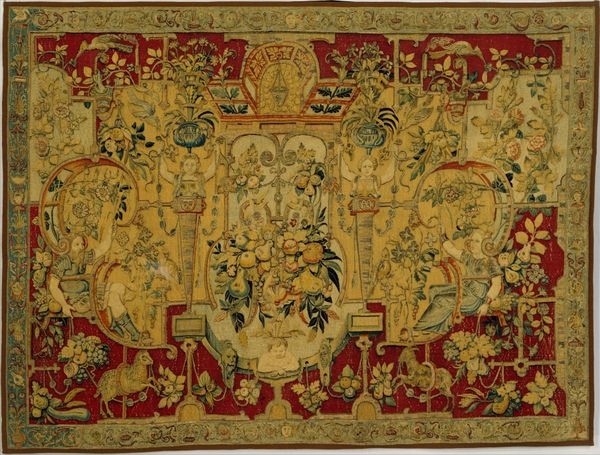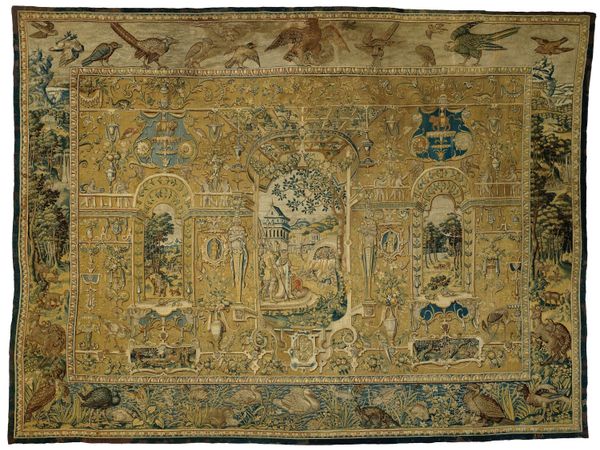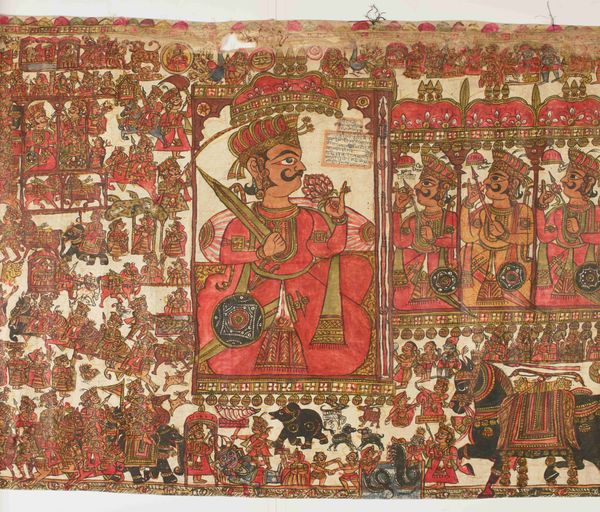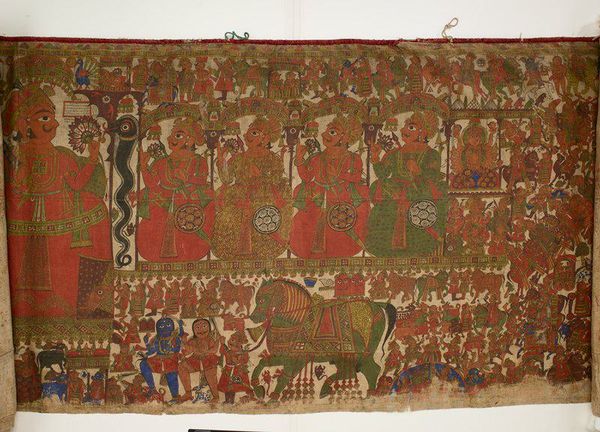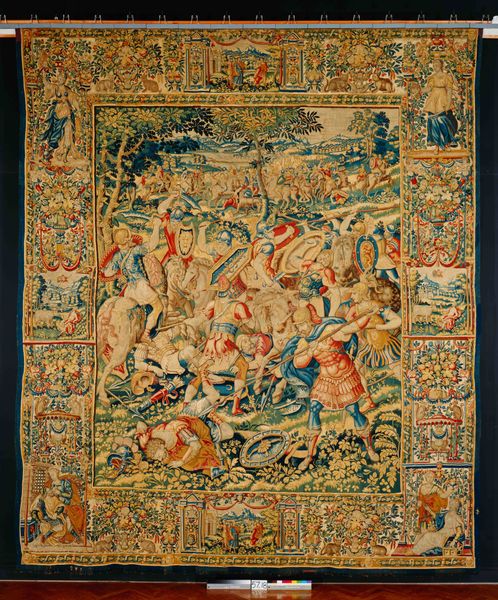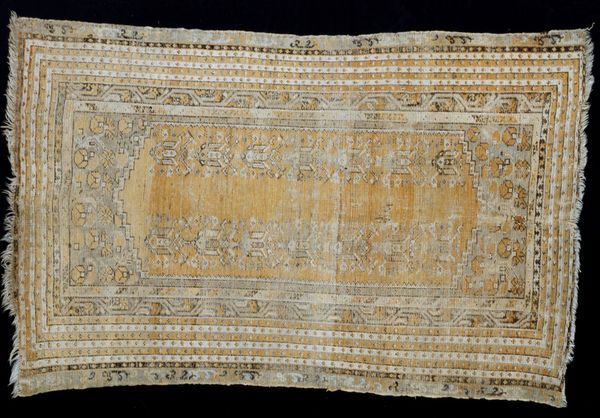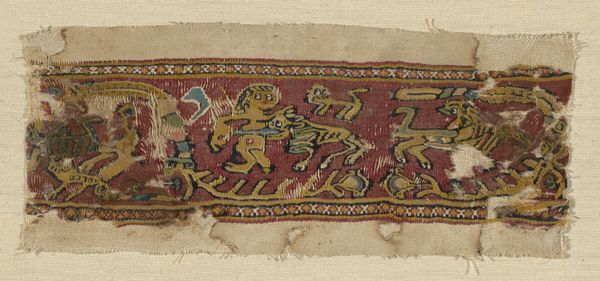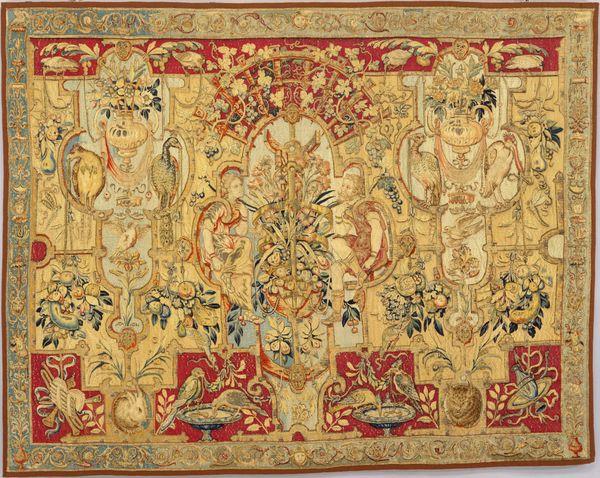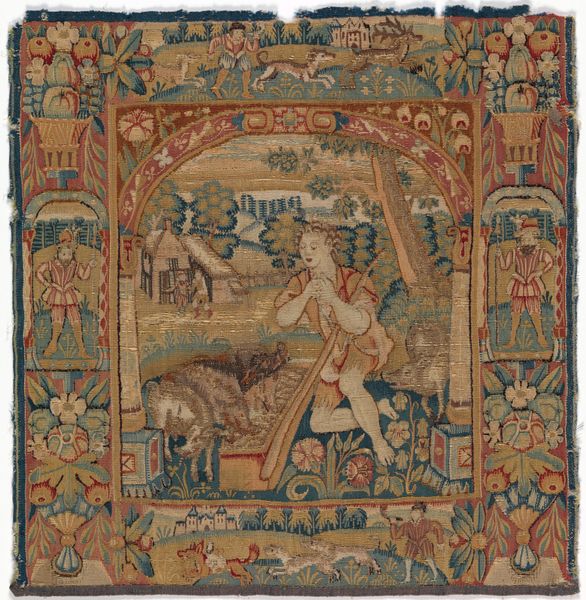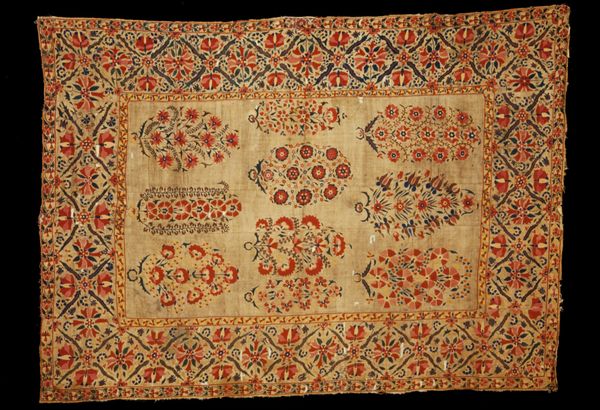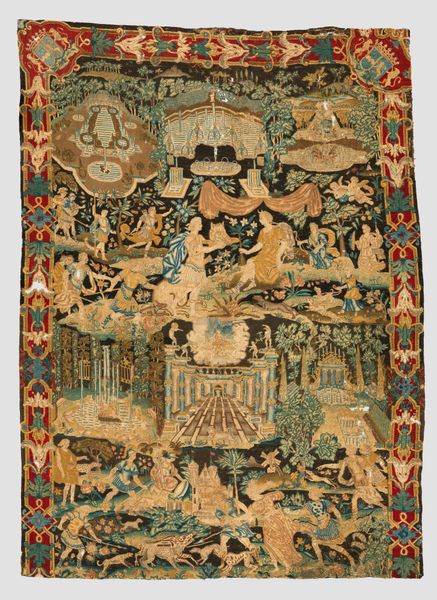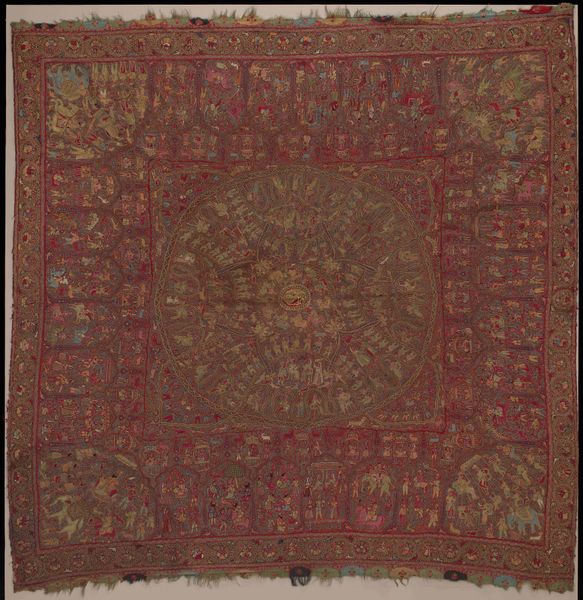
textile, cotton
#
narrative-art
#
asian-art
#
textile
#
figuration
#
geometric pattern
#
organic pattern
#
cotton
Dimensions: 96 x 59 in. (243.84 x 149.86 cm)
Copyright: Public Domain
Curator: What strikes me immediately is the visual cacophony, but contained and rhythmic. So many figures delineated in this striking red and black against the undyed cotton. Editor: Indeed. We're looking at a Mata ni Pachedi textile, likely from the 20th century. It’s currently housed here at the Minneapolis Institute of Art, created by members of the Nagri caste. It serves as a portable shrine cloth. Curator: Portable, and utterly compelling in its visual vocabulary. Note how the figures, while numerous, are simplified into near-geometric forms. The overall composition creates an almost dizzying effect of organized chaos. It begs to be deciphered! Editor: Well, the materials are rather simple – cotton that would have been readily available, and then dyes. The process involves resist dyeing and hand-painting. This textile then becomes a sacred space, deployed to facilitate worship where a temple is not available. Curator: Ah, that shifts the way I see it. The folk art style speaks to something immediately accessible, even rudimentary, and it belies the object's sacred function. How does the nature of its making impact its value within the community? Editor: The Nagri caste traditionally served as storytellers and religious performers. Mata ni Pachedi textiles are not simply art objects, but tangible representations of their religious narratives and social identity. The creation and use are intertwined. Curator: So the artistry, then, becomes almost a performative act in itself, imbricated in this broader cycle of religious and social activity. Considering how repetitive patterns and stark color choices are typically read in modern art...the layering of intentions here really does reframe those conventions. Editor: Exactly. When examining art we usually bring our own lens that comes out of education and how we engage the contemporary artworld, but this piece invites us to question conventional wisdom, engaging with a unique form of art and sacred tradition. Curator: Yes, seeing this artwork allows a deep dive into the relationship of its form and ritual purpose, I think that that is vital when studying these forms of ancestral creations. Editor: Agreed. These textiles speak to the beautiful complexity and enduring power of human expression through cloth.
Comments
No comments
Be the first to comment and join the conversation on the ultimate creative platform.
